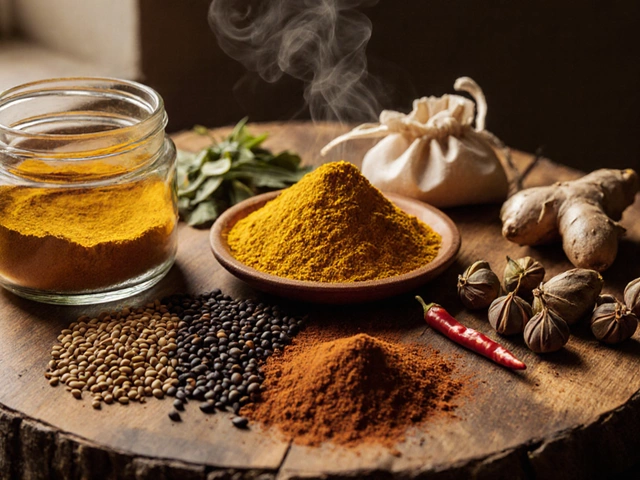So you've just made a fresh batch of paneer at home, and now you're staring at a pot full of cloudy liquid. What is it exactly? It's whey, a byproduct of the cheese-making process, packed with nutrients. Before you think about tossing it down the drain, consider this: whey can be a treasure trove of possibilities.
Nutritionally, whey is no slouch. It's rich in proteins, vitamins, and minerals. You might not want to drink it straight (though some do), but it can sneak into your diet in some delicious ways. How about using it as a base for soups or stews for an added nutritional punch?
If baking is more your style, whey can replace buttermilk or milk in recipes, giving your bread and cakes a subtle, tangy flavor. It's a secret weapon for tender pancakes and waffles too! And for the eco-conscious, whey isn't just great in the kitchen. Consider using it in your garden; plants love the extra nutrients. Just remember to dilute it with water to avoid overwhelming them.
- Understanding Whey
- Nutritional Benefits
- Cooking and Baking Uses
- Gardening and Sustainable Living
- Storage and Shelf Life
Understanding Whey
When you dive into making homemade paneer, you inevitably end up with a pot full of whey. So, what exactly is this stuff? In the simplest terms, whey is the liquid portion that's left over after milk curdles and the curds are strained. It's a natural part of most dairy processes, whether you're making cheese, yogurt, or paneer.
Interestingly, the whey you get from paneer-making is called 'acid whey', due to the way the milk is curdled with an acid like lemon juice or vinegar. It's different from 'sweet whey', which comes from cheesemaking processes involving rennet. But here's what they both have in common: they're nutrient-rich.
Whey is packed with proteins, specifically whey protein, which has been popular among fitness enthusiasts thanks to its benefits for muscle growth and recovery. But it's not just about protein. Whey also contains lactose, some vitamins, and minerals like calcium and potassium. This makes it a potential asset rather than waste.
Whey in Numbers
If you're a numbers person, consider this: whey can consist of about 93% water, 6.5% lactose, 0.9% protein, and about 0.5% minerals. It doesn’t sound like much, but consider the volume you get, and these numbers start adding up. In fact, for every liter of milk, you might end up with around 660ml of whey.
Many folks are amazed to learn just how versatile whey can be. It's not just something you should dispose of. With so much going for it, understanding whey is your first step in making sure post-paneer day isn't just about the cheese.
Nutritional Benefits
You might not guess it by just looking, but whey is a nutritional powerhouse. When you make paneer, you're left with this watery byproduct that's chock-full of goodness. Let's break down what's hiding in that pot.
Rich in Proteins
Whey is a great source of protein, especially amino acids that your body can't produce on its own. This makes it fantastic for muscle repair and growth. For those on a fitness journey, adding whey to your smoothies or soups could help up your protein intake.
Vitamins and Minerals
Among its many nourishing components, whey contains important B vitamins, calcium, and potassium. These essential nutrients support everything from bone health to maintaining proper nerve function. Imagine turning what's usually wasted into something that boosts your overall health.
Low in Calories
Despite its benefits, whey is surprisingly low in calories and fat, making it suitable for anyone watching their intake. You can enjoy its benefits without the guilt of piling on extra calories.
| Nutrient | Benefits |
|---|---|
| Protein | Muscle repair and growth |
| B Vitamins | Support energy production |
| Calcium | Strengthens bones |
| Potassium | Regulates fluid balance |
So, before you consider pouring it out, think of all the ways whey can enrich your diet and contribute to staying healthy. It's a small step towards making the most of what you have, and that’s always a win!

Cooking and Baking Uses
Whey isn't just a leftover liquid; it's a kitchen game-changer! Once you dive into its versatility, you'll wonder why you ever thought about pouring it away. Let's see how this whey can add oomph to your meals and bakes.
Baking Wonders
Ever tried swapping out your baking liquids for whey? It’s a simple trick. Use whey instead of water or milk in your bread dough, and you'll get a softer, fluffier loaf. The slight tang from whey amps up flavor, giving baked goods that little extra something.
- Pancakes & Waffles: Substitute the milk or water with whey, and enjoy a slight tang and super tender texture. Perfect for a weekend breakfast treat!
- Cakes & Muffins: When recipes call for buttermilk, try using whey. It keeps cakes moist and balances sweetness nicely.
Cooking with Flavor
Whey loves to play in the savory sandbox too. It can be a flavor booster for various dishes. Let's see some ideas.
- Soups & Stews: Use it as a stock replacement or base for broth. The subtle acidity of whey can brighten up the flavors.
- Mashed Potatoes: Instead of milk or cream, add whey for a tangy twist!
- Marinating Meat: Whey's enzymes can tenderize meat, giving an added flavor depth.
And here's a little-known tidbit: Whey can be fermented to make homemade ricotta. Talk about bringing things full circle! Intrigued yet? A simple online search can yield plenty of whey transformation recipes, making it fun to experiment in the kitchen. So, the next time you make homemade paneer, think twice before ditching that pot of goodness.
| Dish | Whey Replacement | Benefits |
|---|---|---|
| Pancakes | Buttermilk/Milk | Soft texture, tangy flavor |
| Bread | Water | Soft crumb, improved flavor |
| Soups | Broth | Flavor enhancement, nutrient boost |
Gardening and Sustainable Living
Using whey in your garden is not just eco-friendly, it's downright beneficial. This liquid gold is teeming with nutrients that can promote plant growth if used right. It contains lactic acid, which can help lower the pH of alkaline soils, making it perfect for acid-loving plants like blueberries and tomatoes.
How to Use Whey in Your Garden
- Plant Feed: Dilute whey with water at a 1:5 ratio to create a gentle but effective plant feed. Remember to avoid overwatering; once a month should be plenty for most plants.
- Compost Booster: Add whey to your compost pile to speed up decomposition. The sugars and proteins present in whey provide a food source for beneficial microorganisms.
- Pest Control: Whey can act as a mild pest deterrent. Spray it on leaves to discourage aphids and other insects. Just ensure the dilution is correct to avoid leaf scorch.
Incorporating whey into your gardening routine helps in reducing food waste while promoting sustainability. Plus, it's a great way to keep those garden plants lush and happy!

Storage and Shelf Life
So, you've got a pot full of leftover whey and you’re wondering how long it’ll last. Great question! Storing whey properly is key to making the most of this versatile liquid.
Refrigeration is Key
In the fridge, whey will stay good for about a week. Not a super long time, but definitely long enough to plan a few ways to use it. Make sure to store it in an airtight container to keep it fresh and to prevent it from absorbing any funky fridge odors.
Freezing for the Long Haul
If you’re not ready to use your whey right away, freezing is a solid option. Pour it into ice cube trays for handy portions. Once frozen, transfer the cubes to a freezer bag. This way, your whey can last 3-6 months. Just thaw as much as you need!
Note on Sour Whey
If your whey starts to sour but isn’t rancid, it can still be useful. It's great for fermenting veggies or even as a cleaner in a pinch. Just don't use sour whey in sweet recipes.
Here's a quick reference for the storage times:
| Storage Method | Shelf Life |
|---|---|
| Refrigeration | 1 Week |
| Freezing | 3-6 Months |
Keeping track of your whey and using it efficiently ensures you’re maximizing this nutrient-rich byproduct without letting it go to waste. Also, your plants and recipes might just thank you!
- Poplular Tags
- whey
- homemade paneer
- recipes
- cooking tips











